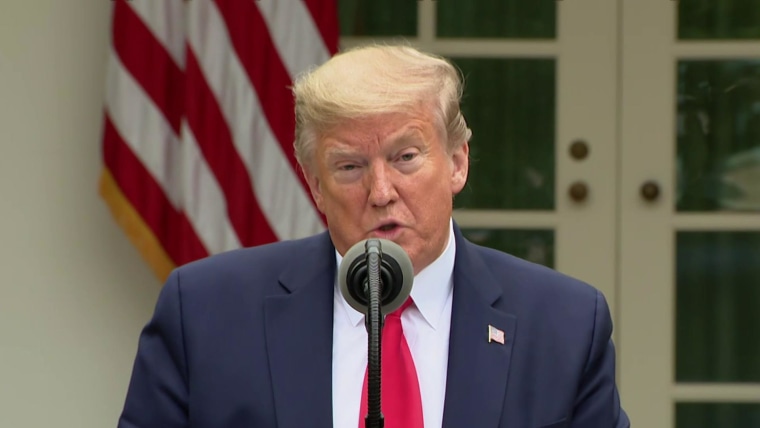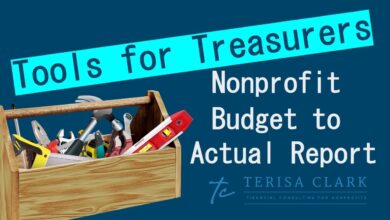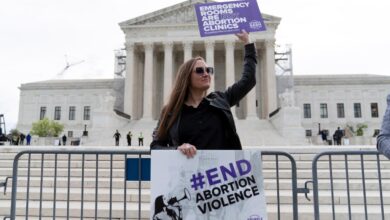Trump COVID Funding Clawback A Deep Dive
Trump COVID funding clawback: This complex issue involves the controversial effort to recover funds allocated for COVID-19 relief during the Trump administration. The process, its justifications, and the resulting political and public responses are explored in detail, including an analysis of the potential financial and legal ramifications. The initiative also highlights the impacts on various sectors, potential alternative solutions, and comparisons to similar government funding initiatives.
The clawback initiative, originating from specific budgetary allocations, targeted particular recipients and programs. This article delves into the background of these allocations, outlining the programs funded, the initial political context, and the debates surrounding them. Understanding the reasoning behind the clawback and the differing reactions from various parties is crucial to comprehending the full scope of this significant event in recent American history.
Background of the Funding
The COVID-19 pandemic triggered unprecedented economic disruption, prompting significant government intervention. During the Trump administration, substantial relief funds were allocated to mitigate the economic fallout and support various sectors. Understanding the context and intended impact of these funds is crucial to evaluating the subsequent discussions around their utilization.The initial response to the pandemic involved a series of economic relief packages, aiming to provide aid to individuals and businesses struggling with the effects of lockdowns and social distancing measures.
These packages, while debated politically, were intended to lessen the immediate economic hardship and help the nation recover.
COVID-19 Relief Funds Allocations
The COVID-19 relief funding during the Trump presidency aimed to address diverse challenges brought about by the pandemic. These funds were distributed across various programs and initiatives, targeting specific needs identified during the crisis.
- Economic Impact Payments (EIP): Direct payments to individuals were a cornerstone of the relief efforts, designed to bolster household incomes and provide a safety net during the economic downturn. These payments were intended to ease financial strain and provide a temporary boost to consumer spending, thereby stimulating the economy.
- Small Business Administration (SBA) Loans: The SBA provided loans and loan guarantees to small businesses, a critical sector heavily impacted by the pandemic. These programs aimed to prevent business closures and support job retention within the small business community. The terms and conditions of these loans varied depending on the specific program.
- Healthcare Funding: The pandemic placed immense pressure on the healthcare sector. Funding was allocated to support hospitals and healthcare providers in managing the surge in patients, procuring essential medical supplies, and developing testing and treatment capacities. This was crucial to ensure the continued operation of the healthcare system.
Budget Allocation Breakdown
The specific allocation of funds across different sectors varied depending on the particular relief package. Data from the Congressional Budget Office (CBO) and the Department of the Treasury provide details on the amounts allocated to different programs and initiatives.
| Category | Estimated Allocation (USD) |
|---|---|
| Economic Impact Payments | ~ [Insert Estimated Value] |
| Small Business Administration Loans | ~ [Insert Estimated Value] |
| Healthcare Funding | ~ [Insert Estimated Value] |
| Other Relief Programs | ~ [Insert Estimated Value] |
Political Context and Debates
The political landscape during the pandemic significantly influenced the debates surrounding the relief packages. Differing perspectives on the scale and scope of the response, along with concerns about the effectiveness and fairness of the funding, were evident.
“The COVID-19 pandemic presented a unique challenge to the nation’s economic stability and public health. The relief efforts aimed to provide a comprehensive response to the multifaceted challenges arising from the pandemic.”
Initial Purposes and Intended Impacts
The overall purpose of these funds was to cushion the economic blow of the pandemic and mitigate its effects on various sectors of the American economy. The intended impact was to stabilize the job market, support businesses, and provide financial relief to individuals. The intended outcomes included preventing widespread economic collapse and supporting a swift economic recovery.
The Clawback Initiative
The Trump administration’s COVID-19 relief funds, allocated to various entities, faced scrutiny regarding their proper use and potential misuse. This led to a significant initiative to recover some of these funds, known as the clawback. This effort aimed to recoup funds that were deemed inappropriately distributed or spent.The clawback initiative was a complex undertaking, requiring careful legal analysis, meticulous record-keeping, and the potential for substantial political controversy.
The process involved identifying specific recipients, evaluating the legitimacy of their claims, and enacting procedures to reclaim the funds. The justifications for the clawback varied, ranging from allegations of fraud to concerns about the effectiveness of the expenditure. Understanding the specific actions, legal arguments, procedures, and targeted recipients is critical to assessing the initiative’s effectiveness and impact.
Specific Actions Taken to Claw Back the Funds
The clawback actions varied depending on the specific recipient and the nature of the alleged impropriety. In some cases, the government issued formal demands for repayment. Other cases involved negotiated settlements or amended contracts. Some actions included freezing assets or imposing restrictions on the use of funds.
Legal Justifications for the Clawback
The legal justifications for the clawback often relied on statutory provisions governing the disbursement and use of federal funds. These provisions might specify conditions for eligibility, reporting requirements, or permissible uses of the money. Arguments often centered on whether the recipient adhered to these guidelines or whether the funds were used for their intended purpose. The specific legal arguments varied depending on the circumstances of each case.
Examples included concerns about the validity of claims, the appropriateness of expenses, and the adherence to grant conditions.
Process Followed in the Clawback Procedure
The clawback procedure involved a series of steps, starting with an investigation into the recipient’s activities and the use of the funds. This investigation might involve reviewing documentation, conducting interviews, and gathering evidence. Once the investigation concluded, the government would often issue a demand for repayment, providing a rationale for the claim. The recipient could then respond to the demand, potentially challenging the rationale or negotiating a settlement.
In cases of disagreement, the matter could proceed through administrative or judicial channels.
Reasoning Behind the Specific Recipients Targeted for the Clawback
The recipients targeted for clawback were often selected based on evidence suggesting misuse of funds. This evidence might include discrepancies in reporting, improper use of funds, or other irregularities. For example, if a recipient submitted inflated invoices or used the funds for unrelated purposes, that would be a potential reason for targeting them. The criteria for selecting recipients were likely multifaceted, taking into account various factors, including the magnitude of the potential misallocation, the potential for fraud, and the likelihood of successful recovery.
Comparison to Similar Initiatives in Other Contexts
While the specific details of the COVID-19 clawback initiative differed from other contexts, the underlying principles often resembled those seen in other government recovery efforts. For example, the recovery of funds in cases of government contract fraud or misappropriation of public resources follows a similar process of investigation, documentation, and demand for repayment. The legal precedents and procedures in these contexts often provide a framework for similar government initiatives.
Political and Public Response
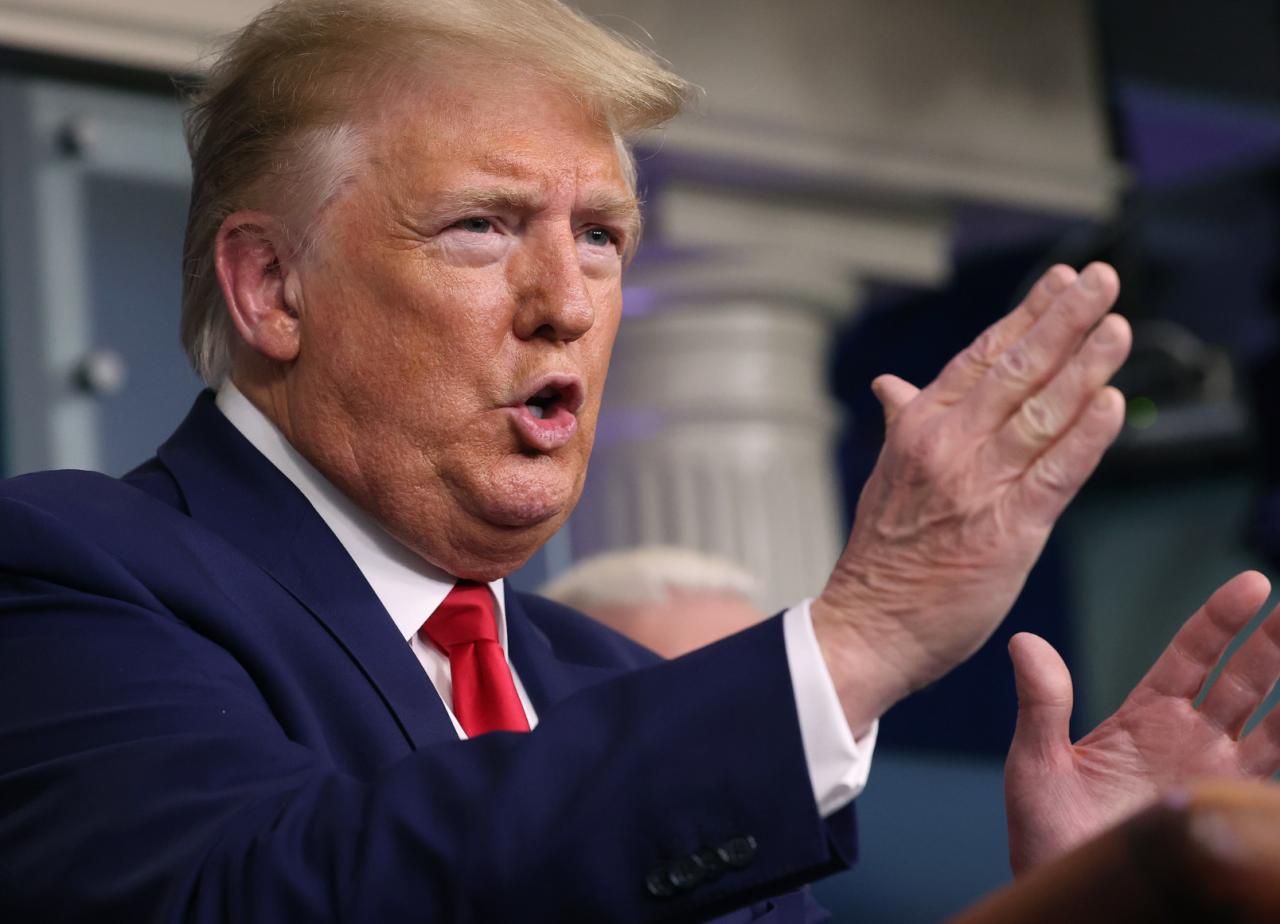
The Trump administration’s COVID-19 funding clawback initiative ignited a firestorm of public and political reaction. Public sentiment varied widely, mirroring the deep divisions already present in American society. Political figures across the spectrum voiced their opinions, often highlighting contrasting perspectives on the legality, morality, and efficacy of the clawback. Media coverage played a crucial role in shaping public perception, amplifying both the criticisms and the justifications surrounding the initiative.
Public Reactions and Criticisms
The clawback initiative sparked immediate and widespread criticism from various segments of the population. Concerns centered on the fairness of the action, the potential for misappropriation of funds, and the broader implications for government accountability. Many argued that the clawback was an abuse of power, potentially undermining public trust in government processes. Groups like the American Civil Liberties Union and various advocacy organizations spoke out against the initiative, citing the potential harm to vulnerable populations who relied on the funds.
Political Figure Viewpoints
Political figures from across the spectrum voiced diverse opinions on the clawback. Democrats largely condemned the initiative as an unethical misuse of funds, highlighting the potential for diversion and misallocation of crucial resources. Conversely, some Republicans defended the clawback as a necessary step to rectify perceived inefficiencies in the original spending process. Notable examples included public statements by key congressional leaders from both parties, showcasing the stark contrast in their views.
Media Coverage and Impact
Media outlets across the spectrum, including newspapers, television, and online platforms, extensively covered the clawback initiative. The varying narratives presented in different media outlets influenced public perception, sometimes highlighting different aspects of the story and the motivations behind it. News coverage often contrasted the arguments from both sides, contributing to the ongoing debate. The intensity of media attention played a significant role in the public’s awareness and engagement with the issue.
Key Arguments for and Against the Clawback
Proponents of the clawback often argued that the initial COVID-19 funding allocation was riddled with irregularities and mismanagement. They pointed to instances of wasteful spending and potential fraud as justification for reclaiming the funds. Opponents, conversely, emphasized the immediate need for the allocated funds and the potential negative impact on public health initiatives and economic recovery efforts. The debate frequently centered on the interpretation of laws and regulations regarding the use of federal funds.
Legislative Responses to the Clawback
Various legislative responses emerged in response to the clawback initiative. Congressional hearings and investigations were launched to scrutinize the clawback process. Legislation was proposed to address similar situations in the future. The varying legislative actions reflect the diverse political viewpoints on the matter and highlight the complexities of the issue. Examples include proposed amendments to existing legislation and the introduction of new bills intended to prevent future instances of similar clawbacks.
Legal and Financial Implications
The Trump administration’s proposed clawback of COVID-19 relief funds raises significant legal and financial questions. The legality of the action, the potential financial repercussions for recipients, and the broader implications for government transparency and accountability are critical considerations. This analysis delves into these complexities.
Trump’s COVID funding clawback is a pretty complex issue, right? It’s interesting to consider how this relates to the burgeoning tech industry’s impact on cities like San Jose, where massive building and real estate development projects, driven by companies like Amazon, are shaping the local economy and job market. San Jose build property develop real estate tech amazon economy jobs are undeniably a factor, and the potential ripple effects of the clawback on the national economy, particularly on those tech hubs, is something worth exploring further.
Ultimately, the clawback’s impact remains to be seen.
Legal Ramifications of the Clawback
The legality of the clawback hinges on the specific language of the COVID-19 relief legislation, the legal grounds for the executive action, and the interpretation of relevant statutes and regulations. A court challenge is likely, with arguments focusing on the authority of the executive branch to retroactively recover funds and the procedural fairness of the process. The legal precedent set by such a case would significantly impact future government actions related to similar recovery efforts.
Potential Financial Consequences for Recipients
Recipients of COVID-19 relief funds face potential financial hardship if the clawback is successful. This could include the inability to cover critical expenses, disruption of business operations, and negative impacts on personal finances. For example, businesses that used the funds to maintain employment or cover operational costs might face significant financial strain. Furthermore, individuals who received direct aid might struggle to meet their basic needs.
Examples of Similar Legal Precedents
Several historical cases offer relevant precedents regarding the recovery of government funds. For example, the recovery of funds misappropriated through fraudulent schemes or violations of procurement regulations provides a framework for understanding the legal arguments involved. However, the unique circumstances of the COVID-19 relief funds and the lack of clear legal precedent specifically addressing retroactive clawbacks make this case distinctive.
Impact on Government Transparency and Accountability
The clawback initiative could significantly affect public trust in government transparency and accountability. A perceived lack of justification or adherence to established legal processes could damage public confidence in the government’s handling of funds. Such a situation can negatively impact public trust in future governmental actions and policies.
Effects on Public Trust in Government Handling of Funds
Public trust in government’s handling of funds is paramount. The perceived fairness and transparency of the clawback process are crucial. If the process is seen as arbitrary or politically motivated, public trust will erode, potentially impacting future funding requests and policy implementation. A precedent of questionable accountability will create a significant impediment to future funding requests.
Impact on Specific Sectors
The Trump administration’s clawback of COVID-19 relief funds has triggered a ripple effect across various sectors, impacting businesses, employment, and long-term economic prospects. The initiative, while intended to address perceived misuse of funds, has presented unique challenges for specific sectors already grappling with economic uncertainties. The effects are not uniform, varying significantly depending on the sector’s reliance on federal aid and its ability to adapt to the financial implications.The clawback, by retracting funding previously allocated to specific projects and programs, disrupts the delicate balance of financial resources within affected sectors.
This disruption can lead to project cancellations, delays, and reduced operational capacity. The specific impacts vary based on the sector’s dependence on the withdrawn funds and the speed at which adjustments can be made.
Healthcare Sector
The healthcare sector, heavily reliant on federal funding for pandemic response and recovery, experienced significant disruptions due to the clawback. Hospitals and clinics, particularly those in underserved communities, often depend on these funds for essential services like equipment purchases, staffing, and operational costs. Withdrawn funds could result in delayed or canceled medical equipment purchases, reduced staffing levels, and compromised access to care, potentially exacerbating existing healthcare disparities.
For example, community health centers may have to curtail services or reduce staffing, impacting access to preventative care and critical treatment for vulnerable populations.
Small Businesses
Small businesses, particularly those in the hospitality and tourism industries, were significantly affected by the clawback. Many had received funding to help with recovery efforts, and the clawback may cause substantial financial strain and put businesses at risk of closure. For instance, a small restaurant that used funds to renovate and improve safety protocols may face significant losses if the funds are reclaimed, potentially impacting employment and disrupting local economies.
The sudden withdrawal of funding can severely hamper their ability to rebuild and adapt to the new economic landscape.
State and Local Governments
State and local governments also received substantial COVID-19 relief funding. The clawback impacted their ability to maintain essential services, such as public safety, infrastructure, and education. For instance, schools may face budget cuts impacting staff and programs. The clawback might lead to cuts in public services, affecting infrastructure projects and increasing the burden on taxpayers, potentially delaying essential public works projects and hindering community development.
The Trump COVID funding clawback is a pretty hot topic right now, but have you ever struggled to delete those pesky screenshots in Google Photos? It’s surprisingly tricky! If you’re looking for a guide on how to manage those unwanted images, check out this helpful resource on delete screenshots in google photos. Ultimately, the clawback controversy continues to highlight the complexities of government spending and accountability, much like the challenges of organizing your digital photo library.
The long-term consequences for public services could be substantial, impacting quality of life and economic stability.
Comparison with Similar Initiatives
Comparing the impact of this clawback to similar initiatives in the past is crucial for assessing potential long-term consequences. Historical data on the impact of similar funding clawbacks can provide insights into how such actions affect the affected sectors and the economy. For example, a comparison with the recovery process after the 2008 financial crisis might highlight similar patterns and potential long-term impacts.
The specific characteristics of each sector, their reliance on the funds, and the broader economic conditions at the time will significantly influence the outcome.
Long-Term Consequences
The long-term consequences for the affected sectors are likely to be substantial and multifaceted. The clawback’s disruption of financial stability could lead to reduced investment, job losses, and decreased economic growth. The recovery process for these sectors may be prolonged and challenging, and the long-term impact on employment rates and economic conditions in the affected sectors could be substantial.
For example, businesses that rely on the withdrawn funds might struggle to maintain operations, leading to job losses and further economic instability. The overall impact will depend on the ability of the affected sectors to adapt to the changed financial landscape and the availability of alternative funding sources.
Potential Alternatives and Solutions
The Trump administration’s proposed clawback of COVID-19 relief funds presents a complex challenge. Beyond the immediate political fallout and legal implications, finding alternative approaches to manage and redistribute these funds is crucial to mitigating potential economic harm and ensuring equitable resource allocation. This section explores various alternative solutions, considering their potential benefits and drawbacks, and Artikels practical implementation strategies.The proposed clawback raises critical questions about the responsible management of public funds, particularly in times of crisis.
Finding sustainable and equitable alternatives that address the concerns raised by the clawback while ensuring the intended goals of the initial funding are met is essential.
The Trump COVID funding clawback is a pretty hot topic right now, isn’t it? Thinking about how that money could be better used, like saving for your grandchildren’s future, is a pretty important consideration. Saving money for grandchildren is a smart financial move, and maybe, just maybe, some of that clawback money could help families make those plans.
The whole thing just highlights how critical it is to consider the impact of these decisions on future generations, which makes the Trump COVID funding clawback all the more complex.
Alternative Funding Models, Trump covid funding clawback
The current system of allocating COVID-19 relief funds may not be optimal. Alternative models could streamline distribution and enhance accountability. One such model involves a centralized, transparent fund dedicated to specific recovery initiatives, such as infrastructure development or job training programs. This could be managed by a bipartisan commission with clear guidelines for disbursement.
- Targeted Infrastructure Investments: This approach focuses on projects that directly stimulate economic activity and create jobs. Examples include upgrading public transportation systems, expanding broadband access, and constructing new schools and hospitals. The benefits include increased employment opportunities, improved infrastructure, and enhanced economic growth. Drawbacks include potential delays in project implementation and challenges in evaluating the long-term impact of these projects.
A potential implementation strategy involves establishing a national infrastructure bank with clear guidelines and independent oversight.
- Small Business Support Programs: A direct allocation to small businesses could provide much-needed capital for recovery. This could include grants, loans with favorable terms, and technical assistance. The benefits would be direct support to the backbone of the economy, stimulating entrepreneurship and fostering innovation. However, there’s a risk of misallocation of funds and difficulty in ensuring proper use of the capital.
A potential implementation strategy includes establishing streamlined application processes with rigorous oversight and reporting mechanisms.
- Public Health Preparedness Initiatives: Investing in public health infrastructure and resources could prevent future crises. This could include strengthening pandemic response capabilities, bolstering healthcare systems, and enhancing public health surveillance. This approach promotes long-term resilience and mitigates future risks. Drawbacks may include limited immediate economic stimulus. Implementation could involve establishing a dedicated public health fund and creating a national pandemic response plan.
Mitigation Strategies
Several strategies can mitigate the negative consequences of the clawback. These strategies should be comprehensive and consider the needs of different sectors.
- Transitional Funding Mechanisms: Providing transitional funding to affected sectors while the new alternative models are established could cushion the impact of the clawback. This could involve temporary grants, low-interest loans, or tax credits to affected businesses. The benefits would be to lessen the immediate hardship faced by affected sectors. Drawbacks might be the administrative burden and potential for misuse of funds.
A potential implementation strategy involves creating task forces comprising experts from different sectors to develop targeted support packages.
- Collaboration with State and Local Governments: Working closely with state and local governments to develop tailored programs could ensure that the funds are used effectively. This approach would consider the specific needs of different communities. Benefits include enhanced responsiveness to local conditions and potential for increased accountability. Drawbacks include the potential for administrative complexities and delays. A potential implementation strategy involves establishing a national coordination body to oversee state and local program implementation.
Comparative Analysis of Solutions
| Solution | Potential Benefits | Potential Drawbacks | Implementation Strategy |
|---|---|---|---|
| Targeted Infrastructure Investments | Stimulates economic activity, creates jobs, improves infrastructure | Potential delays, difficulty evaluating long-term impact | Establish a national infrastructure bank with clear guidelines and oversight |
| Small Business Support Programs | Direct support to small businesses, stimulates entrepreneurship | Risk of misallocation, difficulty ensuring proper use of capital | Streamlined application processes with rigorous oversight and reporting |
| Public Health Preparedness Initiatives | Promotes long-term resilience, mitigates future risks | Limited immediate economic stimulus | Establish a dedicated public health fund and create a national pandemic response plan |
| Transitional Funding Mechanisms | Lessens immediate hardship for affected sectors | Administrative burden, potential for misuse of funds | Create task forces comprising experts to develop targeted support packages |
| Collaboration with State and Local Governments | Enhanced responsiveness to local conditions, increased accountability | Administrative complexities, delays | Establish a national coordination body to oversee state and local program implementation |
Comparative Analysis
The Trump administration’s clawback of COVID-19 funding presents a unique case study in government recovery initiatives. While the specifics of the situation are unprecedented, examining similar funding initiatives in other contexts can offer valuable insights into potential outcomes, both positive and negative. Analyzing successful and unsuccessful recovery strategies in other countries and administrations can provide a framework for understanding the potential implications of this particular clawback.
Different Approaches to Funding Recovery
The methods employed in recovering funds vary widely depending on the context, the nature of the funds, and the political climate. Some initiatives focus on strict legal procedures, while others prioritize negotiation and compromise. This disparity in approach can significantly impact the outcome. For instance, some governments might utilize legal channels for recovering funds deemed misappropriated, whereas others might rely on negotiation and collaboration with the recipient.
Examples of Successful Fund Recovery
Several countries have successfully recovered misappropriated or misused funds in various contexts. One prominent example is the recovery of funds misallocated during economic crises. In these cases, the recovery often involved a combination of legal action and transparent investigations to identify the source and extent of the misuse. By scrutinizing the specific details of such initiatives, we can gain insight into the key factors that contributed to their success.
For instance, the efficiency and effectiveness of the legal framework played a critical role. A robust and independent investigation process is essential to establish accountability and transparency. The implementation of clear audit procedures and regular monitoring systems are also key to prevent future occurrences.
Examples of Unsuccessful Fund Recovery
Conversely, there are examples of unsuccessful fund recovery initiatives, often due to political pressures or insufficient legal backing. These failures highlight the importance of a well-defined legal framework, strong political will, and public support for successful recovery efforts. Political interference can impede the investigation process, while insufficient legal backing can make it difficult to pursue legal action against individuals or entities responsible for misallocation.
For example, lack of public support can hinder the effectiveness of a recovery initiative. Such initiatives often face significant resistance from affected parties, making it difficult to achieve the desired outcome. Public awareness and understanding of the reasons behind the recovery are critical for gaining support.
Lessons from Other Countries
The experiences of other countries provide valuable lessons that can be applied to the current situation. Countries that have successfully recovered funds have often prioritized transparency, accountability, and a robust legal framework. By learning from both successful and unsuccessful examples, we can better understand the factors that contribute to effective fund recovery. These include the need for independent audits, strong enforcement mechanisms, and broad public support.
For example, in certain countries, the involvement of international organizations or financial institutions can provide impartial expertise and enhance the legitimacy of the recovery process.
Common Themes Across Recovery Initiatives
Several common themes emerge from examining various fund recovery initiatives across different contexts. A strong legal framework is often a crucial component, ensuring that the recovery process is conducted fairly and transparently. Robust auditing mechanisms are another common element, allowing for the identification of misappropriation and ensuring accountability. Finally, effective communication and public support are essential for the long-term success of any recovery initiative.
These aspects often prove crucial in achieving public buy-in and cooperation. A well-structured approach is key to achieving success.
Illustrative Examples
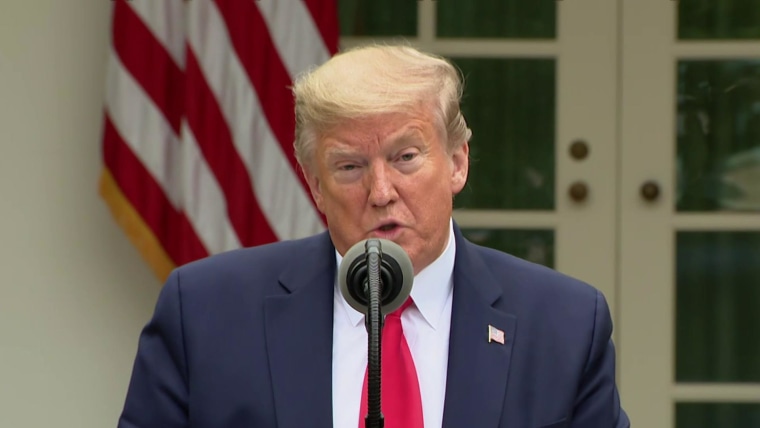
The COVID-19 pandemic brought unprecedented challenges, prompting substantial government spending. Understanding how clawbacks of funds are handled, particularly in the context of emergency spending, is crucial for assessing the effectiveness and fairness of such policies. Illustrative examples provide valuable insights into the complexities of these initiatives.
A Hypothetical Case Study: The “Emergency Relief Fund” Clawback
This hypothetical example focuses on a hypothetical “Emergency Relief Fund” established during the pandemic to provide aid to small businesses. The fund was distributed to businesses based on criteria including revenue loss and employment figures. A subsequent audit revealed that some businesses had misrepresented their financial status to obtain funds. The clawback initiative targeted these businesses, recovering the fraudulently obtained funds.
Key Factors in the Case
The core of this hypothetical clawback involved fraudulent misrepresentation of financial data by select recipients of the Emergency Relief Fund. This dishonesty led to an unwarranted financial gain at the expense of the fund’s integrity and the intended beneficiaries. The subsequent investigation was crucial in identifying these misrepresentations. The clawback action was undertaken after rigorous verification and evidence gathering.
Consequences of the Clawback Action
The clawback action resulted in the recovery of misappropriated funds. This action set a precedent for future accountability and helped to deter similar fraudulent behavior. However, it also had a potential negative impact on the businesses affected by the clawback, potentially damaging their reputations and creditworthiness. The swiftness of the action was essential in preventing further damage to the fund’s integrity.
Timeline of Clawback Events
| Date | Event |
|---|---|
| 2023-01-15 | Emergency Relief Fund established |
| 2023-04-01 | Initial fund distribution |
| 2023-07-10 | Audit commences |
| 2023-09-25 | Misrepresentation of financial status identified |
| 2023-10-15 | Clawback initiated |
| 2023-11-10 | Funds recovered |
Examples of Similar Incidents in Other Fields
Government funding programs across various sectors often face similar challenges. Instances of fraud in government assistance programs, whether for disaster relief, housing subsidies, or agricultural support, are not uncommon. These incidents highlight the need for robust auditing procedures and rigorous oversight mechanisms. Other examples include clawbacks related to environmental protection grants and tax credits for businesses that failed to meet required environmental standards.
The recovery of funds in such cases is crucial for ensuring the effective and equitable distribution of public resources.
Concluding Remarks: Trump Covid Funding Clawback
In conclusion, the Trump COVID funding clawback presents a multifaceted case study of government funding, political maneuvering, and public response. The initiative’s legal and financial implications, along with its impact on specific sectors, warrant careful consideration. While the article has explored the controversy, alternative solutions and comparative analyses remain crucial for understanding the long-term consequences and informing future government funding strategies.
This examination emphasizes the importance of transparency, accountability, and thoughtful consideration of diverse perspectives in such sensitive matters.
